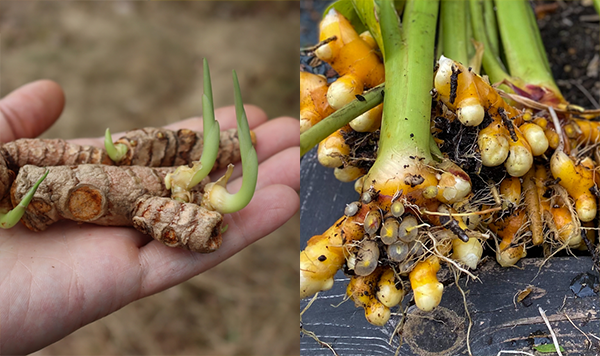How to Grow Turmeric in Containers, in Any Zone
Growing turmeric, a tropical plant renowned for its edible, golden rhizomes, need not be confined to specific hardiness zones. Cultivating turmeric in containers allows gardeners from any zone to enjoy this aromatic spice. Below are detailed steps to grow turmeric in containers effectively, no matter your location.

1. Choosing Your Turmeric Rhizomes:
Start with healthy, fresh, and plump turmeric rhizomes. These are available at garden centers or organic grocery stores. Select ones with buds or eyes, as they are the points from which the shoots will grow.
2. Selecting the Right Container:
Turmeric plants have large leaves and can grow up to 3 feet in height, so select a large container that is at least 12 inches deep and 12-18 inches in diameter. Ensure the container has sufficient drainage holes to avoid waterlogged conditions.
3. Preparing the Soil:
Use a well-draining, organic-rich potting mix. Mix in some organic compost or well-rotted manure to enrich the soil, ensuring optimal nutrients for the growing plants.
4. Planting the Rhizomes:
Plant the rhizomes 2 inches deep with the buds facing up. If your container is large enough, you can plant multiple rhizomes, spaced at least 6 inches apart.

5. Providing Optimal Growing Conditions:
Turmeric thrives in warm and humid conditions. Keep the container in a location where it can receive at least 4-6 hours of indirect sunlight daily. Maintain soil moisture but avoid overwatering. Ideal temperatures for turmeric growth are between 68-86°F (20-30°C).
6. Caring for the Turmeric Plant:
- Watering: Keep the soil consistently moist, especially during the growing season.
- Fertilization: Feed the plant with an all-purpose organic fertilizer every 4-6 weeks during the growing season.
- Pruning: Remove any yellowing or dead leaves regularly to encourage healthy growth.
7. Harvesting Your Turmeric:
Turmeric generally takes 7-10 months to mature. Once the leaves and stems start to turn brown and dry, it’s time to harvest. Carefully remove the soil around the base of the plant and extract the rhizomes. Wash them thoroughly and let them dry.
8. Curing and Storing:
Once harvested, boil the rhizomes for 45 minutes and then dry them in a well-ventilated, shaded area for at least a week. After drying, you can store the turmeric rhizomes in a cool, dark place or grind them into powder for culinary use.

9. Overwintering:
If you are in a colder zone, move the containers indoors during winter or when the temperature drops below 50°F (10°C). Maintain light and water, and your turmeric can continue to thrive.
Growing turmeric in containers is an accessible way to cultivate this beneficial spice in any zone. By selecting healthy rhizomes, using the right container and soil, and providing optimal growing conditions, you can enjoy homegrown turmeric with its rich, earthy flavor and myriad health benefits. Whether you are a seasoned gardener or a beginner, these steps can guide you through a successful turmeric growing journey, allowing you to savor the fruits of your labor in your culinary creations.



















